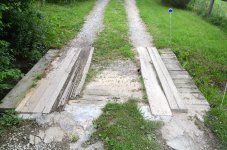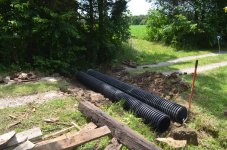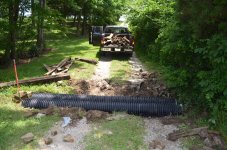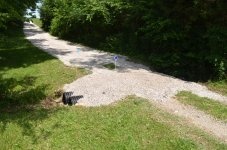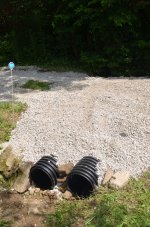First, I will admit I only read the first page of this thread. But I agree with the idea of using culverts instead of a bridge. I disagree with the use of a small truck vs. a large truck.
How far is it from the top of the bridge to the bottom of the ditch? I see some suggestions for what seems to be a large culvert compared to the depth. You may be surprised to learn how much build it takes to slope up and across a culvert that extends much above the ground level. I would use more than one culvert but smaller. It currently looks like a triangle ditch, so calculate the area under the bridge and size your culverts accordingly.
You said the ditch usually has very little water flowing in which case the smaller culverts will flow more water. It is a fact that the volume of a 24" culvert is more than 2 12" culverts. However, with just 2" of water flowing, more water can move through 2 12" culverts than 1 24". The volume being approximately 24.8" and 18" respectively. But at full volume it would take 4 12" culverts to equal 1 24". 3 8" culverts allow 1/3 more than 2 12". Basically if the ditch is wide enough but not very deep, you may consider smaller culverts.
